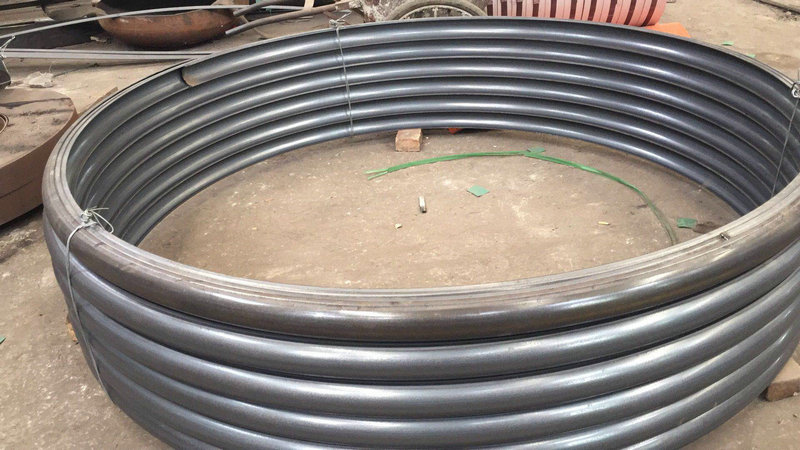Half pipe coils represent a significant advancement in heat exchange technology, offering superior performance in refrigeration, HVAC systems, and industrial heat transfer applications. These specialized components provide enhanced efficiency and reliability in demanding environments.
Structural Design of Half Pipe Coils
The innovative design of half pipe coils contributes to their exceptional performance characteristics:
Physical Structure: Half pipe coils consist of semicircular tubes arranged in circular or spiral configurations, forming an integrated coil structure that maximizes surface area for optimal heat transfer.
Material Selection: These coils are manufactured from various materials including copper, stainless steel, and carbon steel, selected based on fluid properties and operational conditions.
Manufacturing Process: The production involves precision engineering with strict control of welding parameters to ensure quality and prevent defects.

Precision-engineered half pipe coil showcasing advanced manufacturing techniques
Working Principle of Half Pipe Coils
Heat Exchange Mechanism: Fluid enters the half pipe coil through one port and exchanges heat with the tube wall during flow. This design maximizes the contact area between fluid and tube wall, significantly improving heat exchange efficiency.
Fluid Dynamics: In specific applications, fluids can establish circulating flows within the coil, further enhancing heat transfer effectiveness through improved turbulence and distribution.
Advantages of Half Pipe Coil Technology
High-Efficiency Heat Exchange: The unique structural design significantly increases heat transfer rates compared to conventional heat exchangers.
Design Flexibility: Engineers can customize the number, arrangement, and material composition to meet specific application requirements.
Space Optimization: Half pipe coils require less installation space, making them ideal for applications with spatial constraints.
Material Specifications for Half Pipe Coils
The following table details chemical compositions of materials commonly used in half pipe coil manufacturing:
| Material Type | Main Components | Characteristics |
|---|---|---|
| Stainless Steel | Fe, Cr 16-20%, Ni 8-14%, Mo 2-3% (316 series only) | Excellent corrosion resistance, suitable for chemical and food processing industries |
| Carbon Steel | Fe, C 0.25-0.29%, Mn 0.27-1.06% | Cost-effective, high strength, but limited corrosion resistance |
| Titanium Alloy | Ti ≥99%, Al 5.5-6.75%, V 3.5-4.5% | Lightweight, exceptional corrosion resistance, ideal for specialized applications |
| Nickel-Base Alloy | Ni ≥72%, Cr 14-17%, Mo 15-17% | High temperature and corrosion resistance, suitable for extreme environments |
| Copper Alloy | Cu 60-90%, Zn 10-40%, Sn 10-20% | Superior thermal conductivity, but moderate corrosion resistance |
| Duplex Stainless Steel | Fe, Cr 22-23%, Ni 4.5-6.5%, Mo 3-3.5%, N 0.14-0.20% | Combines high strength with excellent corrosion resistance |
Applications of Half Pipe Coil Technology
Refrigeration Systems
Used as evaporators or condensers in air conditioning and refrigeration equipment, providing efficient heat transfer for temperature control.
HVAC Systems
Employed in heating systems for residential, commercial, and industrial spaces, facilitating effective heat exchange in climate control applications.
Industrial Processes
Utilized for temperature regulation and heat exchange of various media in chemical, pharmaceutical, and manufacturing operations.
Frequently Asked Questions About Half Pipe Coils
What is a half pipe coil jacket?
Half pipe coil jackets are specialized heating/cooling jackets commonly used in the chemical industry. They consist of 180-degree segments wrapped around the exterior of containers, providing exceptional heat transfer efficiency. Also known as split coil jackets or half-tube jackets, they are particularly effective for higher temperature applications.
How do half pipe coils improve heat transfer efficiency?
The semicircular design increases surface area contact between the fluid and tube wall, while promoting turbulent flow that enhances heat exchange rates compared to traditional straight-tube designs.
What factors determine material selection for half pipe coils?
Material choice depends on operating temperature, pressure, fluid corrosiveness, thermal conductivity requirements, and environmental conditions. Different materials offer varying balances of strength, corrosion resistance, and thermal performance.
Half pipe coil technology continues to evolve, with ongoing research focused on enhancing heat transfer efficiency, expanding material options, and developing more compact designs for emerging applications across industries.

